Southcoast Wonders: Roadside cemeteries offer connections to history — and Halloween vibes
The past is around every corner in southern New England, often literally. The cities and towns of the Southcoast still carry signs of history that go back to this country’s founding — gravestones, slate or granite, marking the final resting places of people who led fascinating lives ages ago.
Tiny roadside cemeteries can be found all over the area, dozens of them, often hidden behind centuries-old stone walls in family burying grounds that have been maintained as green space while the modern world has developed around them. While some of these grounds haven't seen new burials in over a century, a few are surprisingly active.
Visiting these out-of-the-way spots is a great way to touch local history, see something you may never have noticed before — and most importantly these days, set the perfect mood for spooky season. Just remember to leave no trace and be respectful.
Here are seven hidden spots worth seeking out to find some fall vibes.
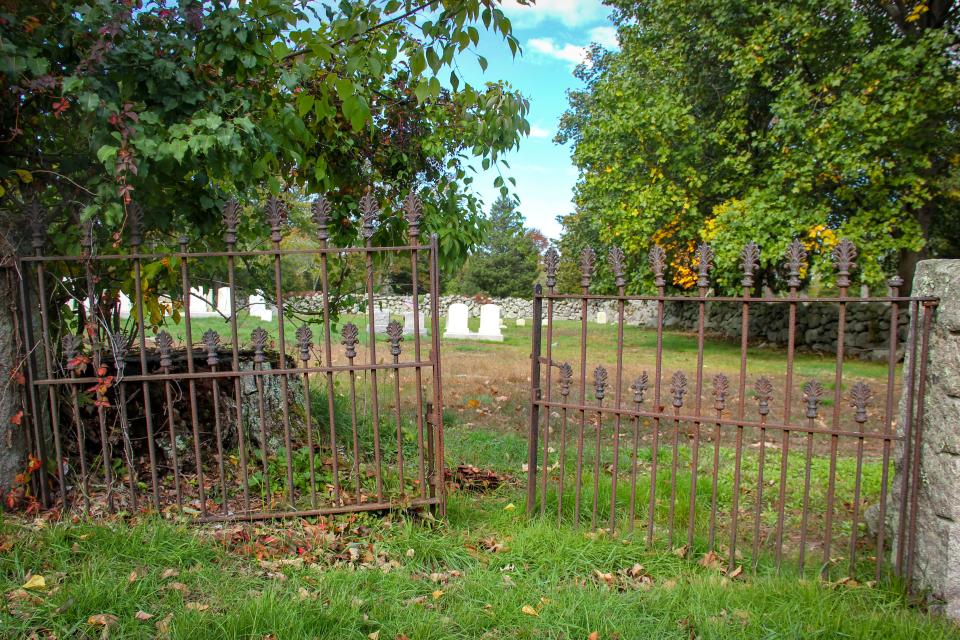
Babcock-Gifford Cemetery, Westport
Where is it? Along the west side of Blossom Road in Westport.
How to visit: The cemetery is enclosed by a stone wall and an iron gate that stands ajar.
Who’s there? Along with Babcocks and Giffords, of course, there are members of the Hicks, Hix and Wordell families too, among others. This is also the resting place of Corp. Benjamin Franklin Gerry, a Fall River resident who died in 1913 and fought from 1861 to 1864 in the Civil War as a member of the 7th Massachusetts Infantry, Company A.
Fun facts: One of the residents of this burial ground is William Henry Gifford, who died in 1915. According to "The History of Bristol County,” he was an industrious farmer who grew to become a major businessman in the area. He had significant real estate holdings, owned part of a whaling ship, and was director of the Barnard Manufacturing Co., which today we know as the Tower Mill on Quarry Street in Fall River.
Spookiness factor: 2/10. This is a well-kept place with bright white headstones, nothing to fear here.
Changing things up: The Pasta House is now Bocca. But that's not the only change at the Fairhaven restaurant.
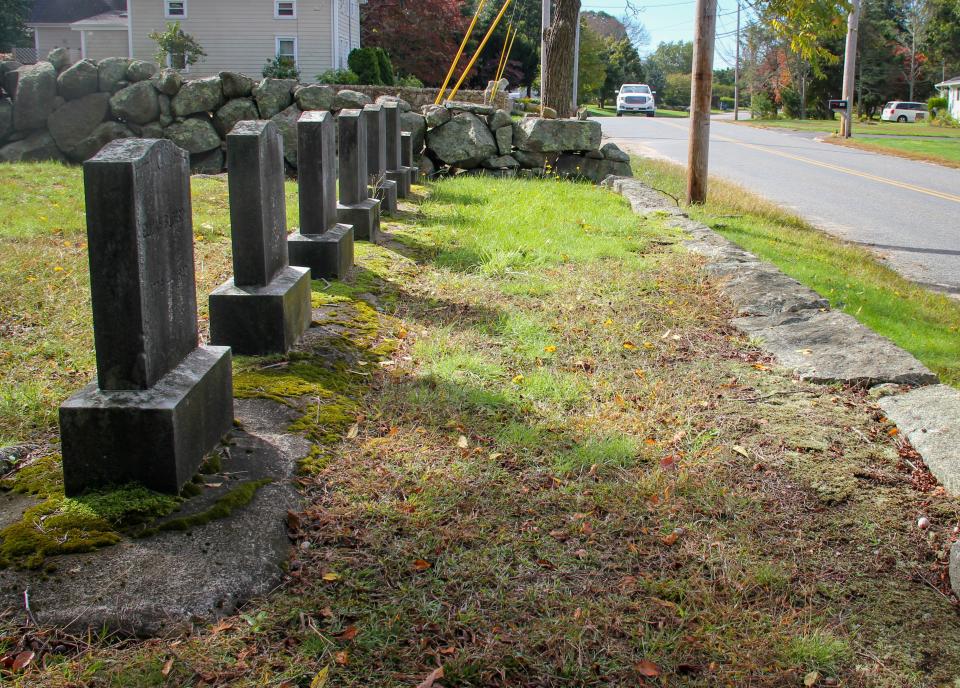
Blossom Cemetery, Westport
Where is it? Along the eastern side of Blossom Road in Westport, next to the Headwaters Conservation Area.
How to visit: The hiking spot next door has parking for one or two cars, with the cemetery easily accessed.
Who’s there? Seven neat, identically shaped headstones commemorate members of the Blossom family, including patriarch Elijah Blossom, a “veteran of the early Indian wars,” according to the Fall River Globe, who built a homestead on the east side of the Watuppa Pond.
Fun facts: The Blossoms trace their lineage to one of the earliest Pilgrim colonizations. A descendant of the Blossom family, Abram Blossom, sold the family farm in the early 20th century to the city of Fall River to establish the Watuppa Reservation, which has protected the water supply ever since.
Spookiness factor: 1/10. The cemetery’s neatness and symmetry are too quaint to be scary.
The end of an era: Dartmouth's Lincoln Park was a summer hotspot — but why did it close?
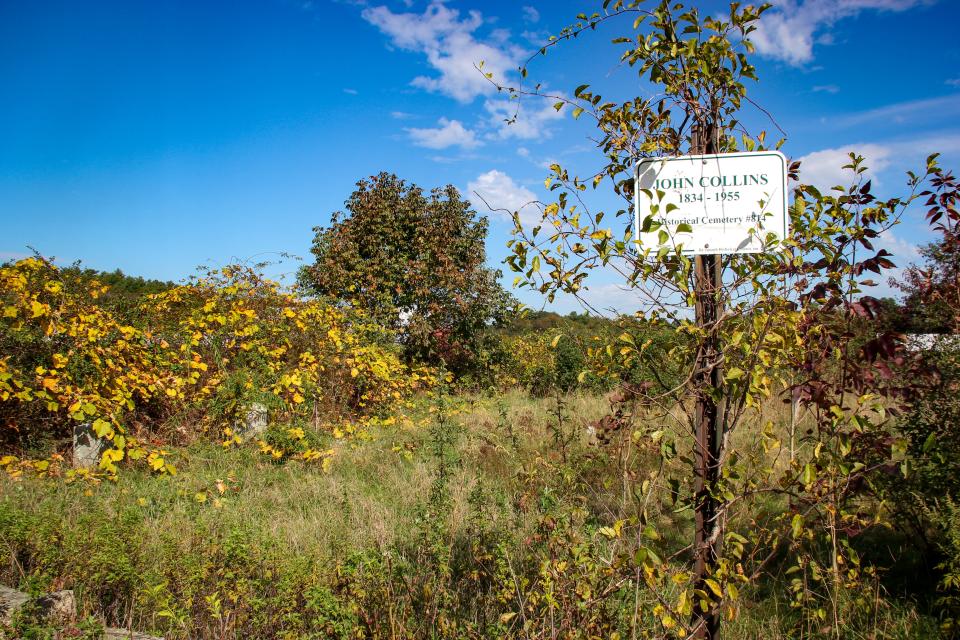
John Collins Cemetery, Dartmouth
Where is it? Dartmouth is simply loaded with family cemeteries, most tucked away on private land out of sight. But this one is on the side of North Hixville Road near Copicut Reservoir.
How to visit: A sign marks the cemetery’s location, surrounded by a stone wall, alongside some farmland. The grounds have been long untended, so walking around in there might not be a great idea unless you enjoy tick bites.
Who’s there? This was a family plot for members of the Collins family who passed on in the mid-1800s, though many of their graves are unmarked. It's one of at least three Collins family burial grounds in the area, "successful millers and farmers," according to the Massachusetts Historical Commission. There are much more recent markers for Herbert and Josie Heath, who died in the 1950s. It's unclear how they're related — a check of city directories reveals Herbert was a laborer, and the two lived on Austin Street in New Bedford.
Fun facts: The plot is carved into a small chunk of what is today Copicut Farms, a locally owned farm that produces pasture-raised livestock.
Spookiness factor: 8/10. North Hixville Road is pretty isolated, and the condition of this plot along with knowing that many of the graves are unmarked can give you the willies.
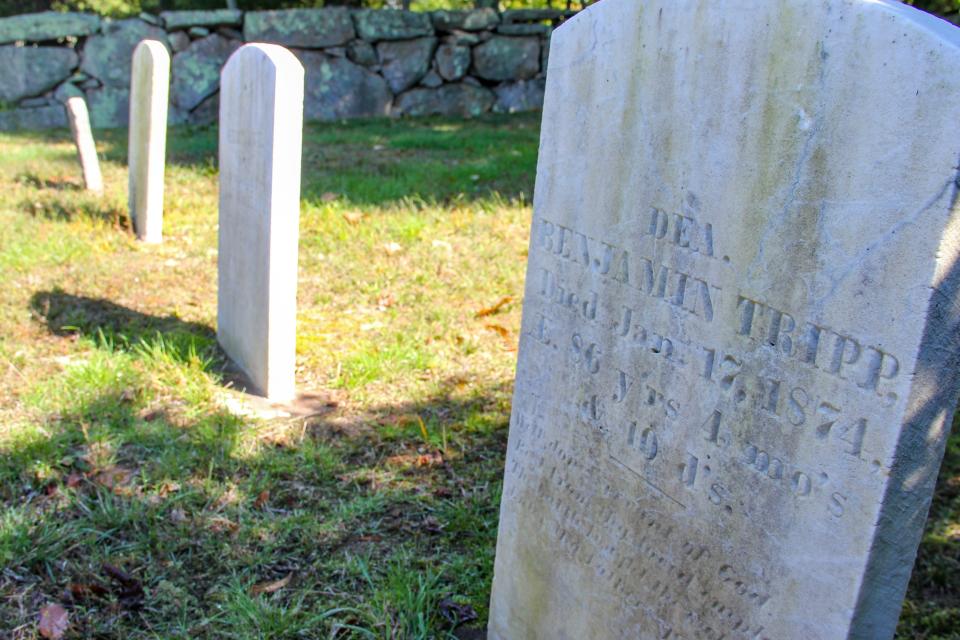
Benjamin Tripp Burial Ground, Westport
Where is it? You’ll find it at the corner of Main Road and Benjamin Tripp Road.
How to visit: The site is surrounded by a stone wall you can easily see over, with a wooden gate that allows you to enter the grounds.
Who’s there? The site contains the plot of Benjamin Tripp and several of his family members. Tripp was the longtime deacon of the First Christian Church of Westport, a position he held for over four decades; he died in 1874. Beside him is his wife, Elizabeth, who died in 1883 at the age of 92. The two had been married for over 60 years.
Fun facts: The Tripps apparently had good genes, with several living exceptionally long lives. Their daughter Peace died at age 84. A son James died at 91, and another daughter, Prudence, lived to see age 95.
Spookiness factor: 2/10. This cemetery is a serene resting ground. Any ghosts that show up are likely to be friendly.
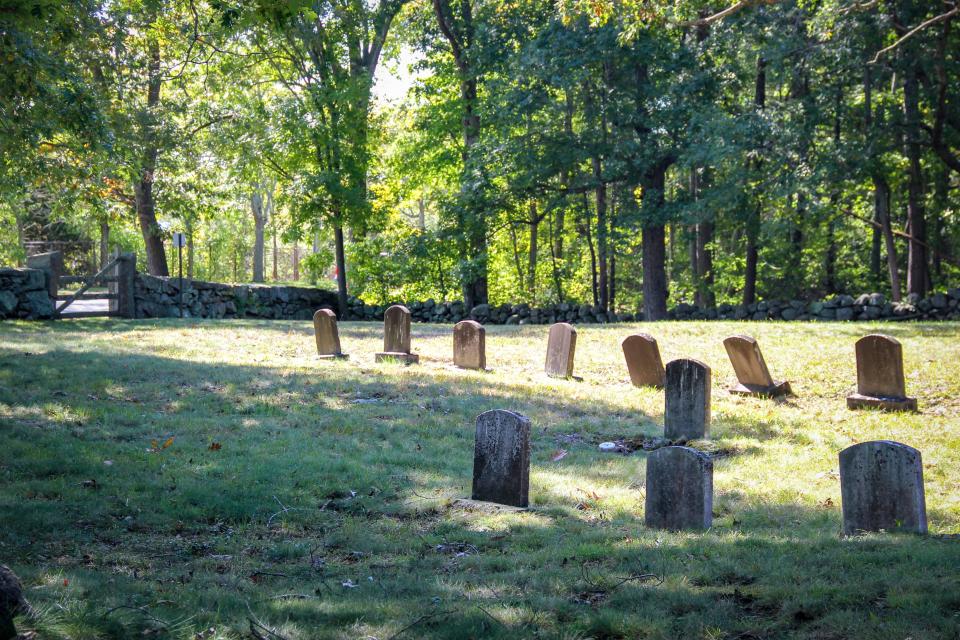
Newtown Burial Ground, Dartmouth
Where is it? You'll find this surprisingly spacious cemetery wedged between Old Faunce Corner Road and Faunce Corner Road in Dartmouth, behind the Bank of America.
How to visit: There’s plenty of parking in the shopping plaza right nearby. The cemetery itself is enclosed by a stone wall and a gate, although the gate is locked.
Who’s there? The cemetery, with over 100 monuments dating from the late 18th century to the early 20th, is owned by the Dartmouth Monthly Meeting of Friends, a Quaker group. The names here are common ones with long ties to the area, like Howland, Slocum, Wordell, Mosher and Tripp. The place itself, Newtown, is an old name for the Smith Mill’s area of Dartmouth.
Fun facts: The Dartmouth Monthly Meeting of Friends is one of the oldest Quaker groups in the United States, formally founded in 1699 — and it’s still around and active today, as the Smith Neck Friends Meeting.
Spookiness factor: 4/10. The sight of plain stones dotting the rolling hills make this creepy even given the Kohl’s within clear view.
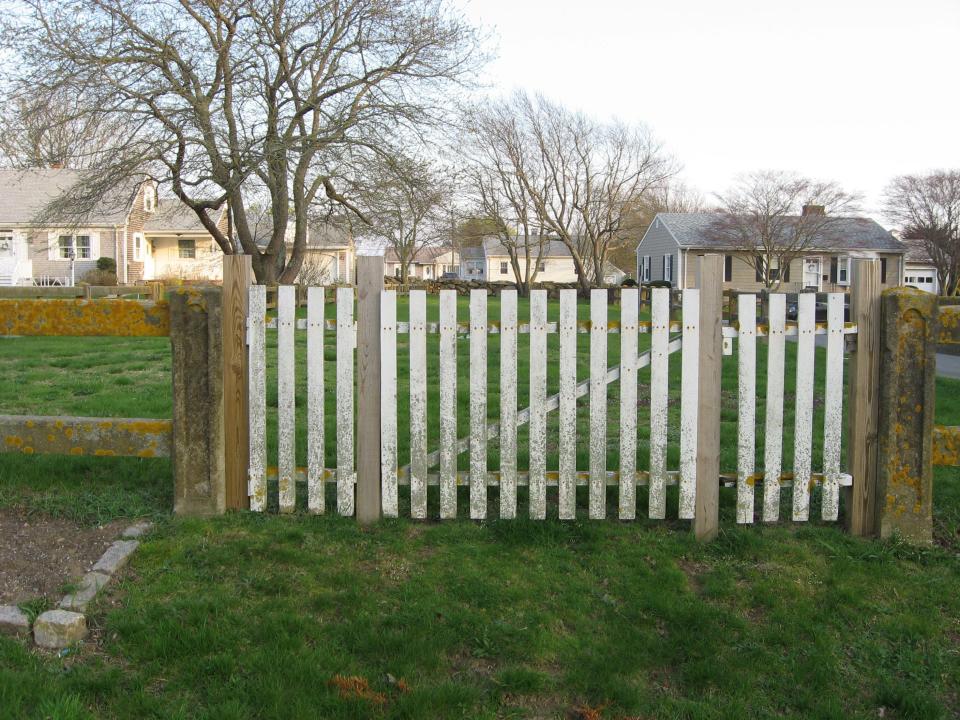
Clark’s Point Cemetery, New Bedford
Where is it? A narrow strip of land on Clark’s Point near Fort Rodman holds this cemetery, slipped in between single-family homes.
How to visit: This publicly owned cemetery is bordered by a short cast concrete fence with a wooden gate.
Who’s there? The area was once home to the city almshouse and infirmary. This is a smallpox cemetery established in 1901, and according to the Massachusetts Historical Commission as many as 24 people were buried here — but there’s only one marker: Marianna J. Castro, who died in 1901. In that year, two schooners carrying immigrants from Cape Verde were ordered quarantined for smallpox and several passengers taken to the smallpox hospital; upon death they were buried here. Castro’s monument was placed at the site later by her children. No full records exist of everyone buried at the site, though the genealogy website Findagrave.com lists several names.
Fun facts: New England has suffered several smallpox outbreaks, most notably in the 1750s, 1770s, the early 1900s and in 1915, with victims of the painful, disfiguring and highly virulent disease often buried in separate cemeteries. The last natural outbreak of smallpox in America was in 1949, and today, thanks to vaccination, the disease has been eradicated.
Spookiness factor: 7/10. It’s a quaint neighborhood, but the terrible history of epidemics and the uncertainty of how many people died here makes visiting a disquieting experience.
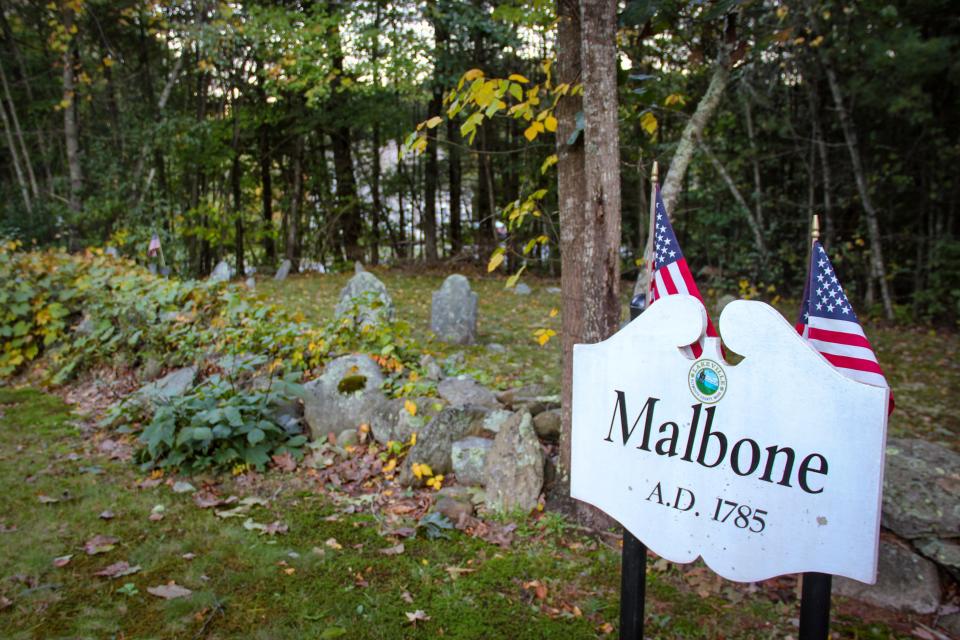
Malbone Cemetery, Lakeville
Where is it? In the southern part of Lakeville, near the Freetown line, a tiny family cemetery stands at the intersection of Malbone Street and Emerson Road.
How to visit: A small sign marks the cemetery, which is a small plot bordered on one side by a stone wall and backed by deep woods.
Who’s there? Several members of the Briggs family from the early 1800s are buried here — and according to news reports at the time, they were big trouble. Malbone Briggs, a “bold burglar” according to the Fall River Evening News who lived from 1763 to 1838, apparently spent much of his life in state prison and died there. According to the Fall River Monitor, Malbone and his wife, Meribah, also buried here, were indicted in 1827 on charges of theft of some cloth and a bag of money — Malbone was convicted, but Meribah was found not guilty. Malbone at one point served hard time with seven of his eight sons, several of whom are buried here, including Daniel, John, Malbone Jr., and Doctor. An entry in “The History of the Town of Lakeville” published in 1953 says Malbone and his sons "were all highwaymen and robbed stagecoaches,” sometimes stealing horses and leaving them to die in the cedar swamp in the area.
Fun facts: According to the New Bedford Evening Standard of 1879, “For more than a hundred years, this branch of the Briggs family has furnished in every generation criminals,” claiming Malbone’s lineage is traced back to “a noted pirate.” A report in the Fall River Evening News says a brother of Malbone was “convicted of some crime and branded on the cheek with the letter C,” and that Malbone’s aunt Hannah was in 1788 was convicted of “fornication and bastardy” and ordered to pay a fine of 8 pounds or receive 10 lashes “on her naked back, well laid on.”
Spookiness factor: 9.5/10. The cemetery lies in a rural spot, bounded by dark woods full of chittering animals, which is already pretty creepy. But knowing the story of those buried here makes it eerier.
Dan Medeiros can be reached at dmedeiros@heraldnews.com. Support local journalism by purchasing a digital or print subscription to The Herald News today.
This article originally appeared on Standard-Times: Southcoast Wonders: Explore roadside cemeteries in Greater New Bedford

